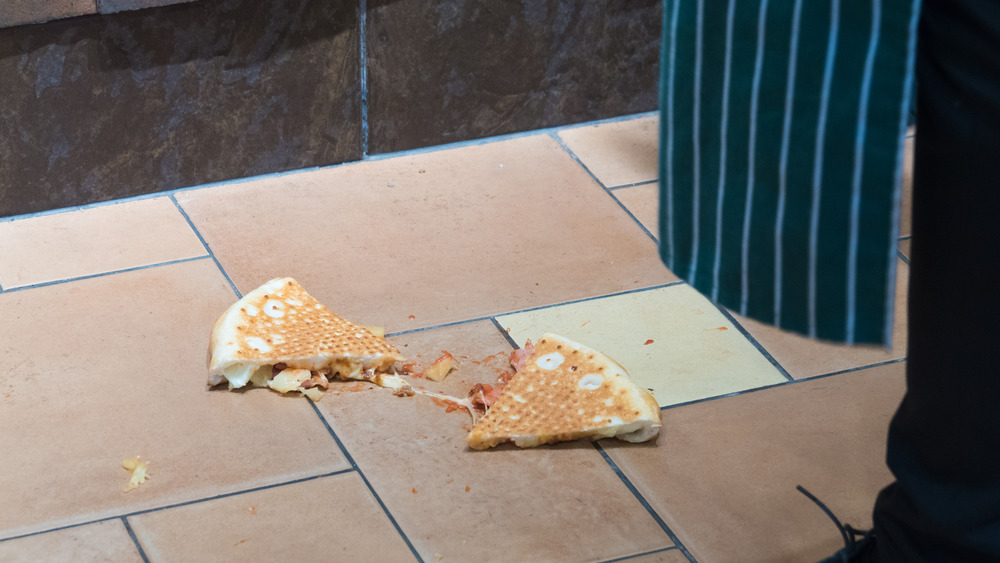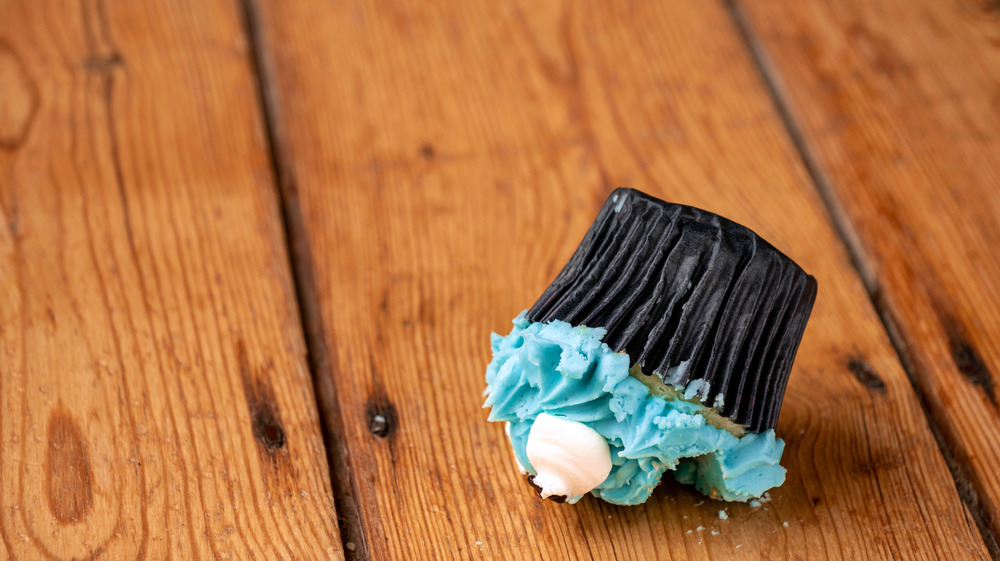Is The Five-Second Rule Real?
So many of us have grown up with the "five-second rule" as a given, but we may never have questioned the science behind it. If you drop something on the floor, is it really safe to eat it, if you pick it up quickly? You may be surprised to learn that there was actually a study conducted on the matter; the results may not be what you were hoping for.
Under the supervision of a doctoral candidate, one high school senior decided to test how many germs would actually transfer to a dropped piece of food if it was picked up within five seconds (via WebMD). As it turned out, the floor didn't contain very many strains of bacteria. The research team hypothesized that this was due to a lack of moisture (the preferred breeding ground for microbes). When the study was performed using tiles covered in E.coli cells, a transfer of bacteria was seen before the five seconds were up.
So what do I tell my kids about eating food off the floor?
As it turns out, not all surfaces are created equal when it comes to germs. Researchers at Rutgers found that the ambient moisture, as well as the moisture of the item dropped, contribute to the transfer of bacteria (via Healthline). Of the surfaces tested, carpet had the lowest rate of transfer, much lower than harder surfaces like tile and wood.
Some scientists argue that allowing kids to follow the five-second rule provides them with an opportunity to build their immune system (via Science Friday). It's important to remember that while the floor has a unique "ick factor," contaminants are everywhere. According to the University of Michigan Medicine, food-preparation surfaces and even your hands can contain illness-causing agents. In some cases (think salmonella on cutting boards) these can be even more dangerous than the floor.
When eating any meal, whether with your fingers or otherwise, be sure to wash your hands thoroughly to prevent contamination.


